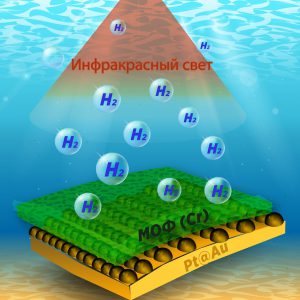Researchers from the Czech Republic and Russia have developed a new material that uses gold, platinum and chromium to generate hydrogen molecules from fresh, salt, and polluted water by exposure to infrared sunlight.
The objective behind this development is that the solution becomes another green tool to help tackle the global energy challenge.
In a paper published in the journal ACS Applied Materials & Interfaces, the scientists explain that the material is a three-layer structure with a 1-micrometre thickness. The lower layer is a thin film of gold, the second one is made of 10-nanometre platinum, and the third is a film of metal-organic frameworks of chromium compounds and organic molecules.

“During the experiments, we watered material and sealed the container to take periodic gas samples to determine the amount of hydrogen. Infrared light caused the excitation of plasmon resonance on the sample surface. Hot electrons generated on the gold film were transferred to the platinum layer. These electrons initiated the reduction of protons at the interface with the organic layer. If electrons reach the catalytic centers of metal-organic frameworks, the latter were also used to reduce protons and obtain hydrogen,” Olga Guselnikova, the lead author of the study, said in a media statement.
Subsequent experiments showed that 100 square centimetres of the material can generate 0.5 litres of hydrogen in an hour. This is one of the highest rates recorded for 2D materials.
“In this case, the metal-organic frame also acted as a filter. It filtered impurities and passed already purified water without impurities to the metal layer,” Guselnikova said. “It is very important because, although there is a lot of water on Earth, its main volume is either salt or polluted water. Thereby, we should be ready to work with this kind of water.”
According to the researcher, future work should focus on improving the material to make it efficient for both infrared and visible spectra. This would allow it to perform with 93% of the spectral volume of sunlight.
